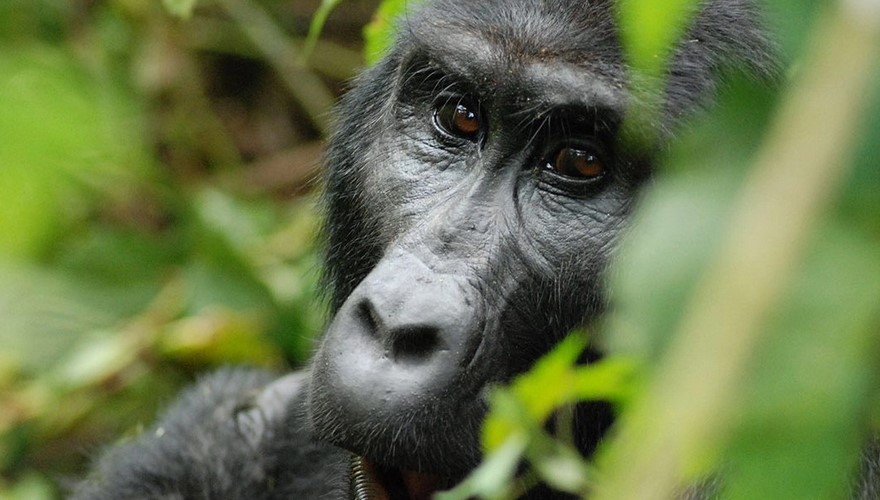10 Fascinating Facts About Mountain Gorillas
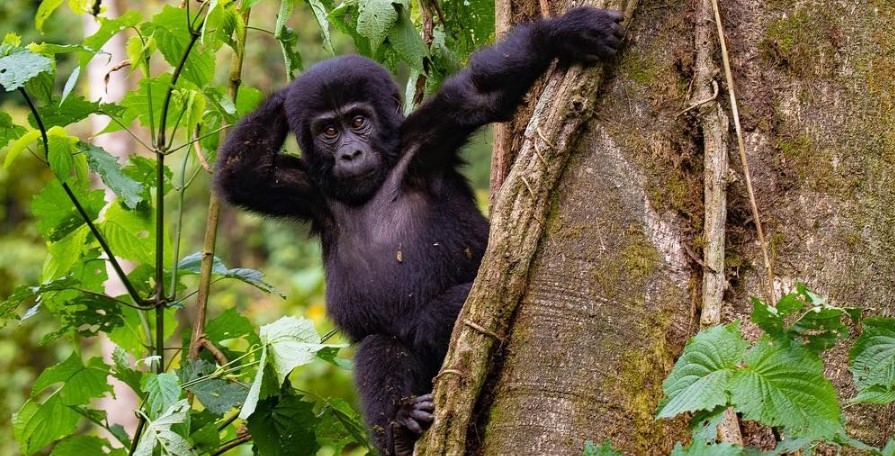
10 Fascinating Facts About Mountain Gorillas
Introduction: A Journey into the Realm of Gentle Giants
10 Fascinating Facts About Mountain Gorillas : In the heart of Africa’s lush, vibrant forests, a captivating world awaits—home to the majestic mountain gorillas. These gentle giants, with their expressive eyes and formidable presence, offer an unparalleled experience that captivates travelers from around the globe. Renowned not only for their striking beauty but also for their remarkable intelligence and complex social structures, mountain gorillas stand as one of our closest relatives in the animal kingdom, sharing an astounding 98% of our DNA. However, they are also among the most endangered species, with their survival intricately tied to conservation efforts in their natural habitats. This blog delves into ten fascinating facts about these incredible creatures, inviting you to join us on a journey of discovery that explores their behavior, habitat, and the pressing conservation challenges they face.
Intelligence: The Cognitive Giants of the Forest
One of the most astonishing aspects of mountain gorillas is their remarkable intelligence. These primates demonstrate advanced problem-solving abilities that rival those of chimpanzees and orangutans. In their natural habitats, gorillas have been observed utilizing tools—sticks to extract termites, rocks to crack open nuts, and even leaves to collect water. Their problem-solving prowess extends beyond mere survival; in captivity, some gorillas have effectively used sign language to communicate with their caretakers, showcasing not just intelligence but a capacity for learning and adaptation.
What truly sets mountain gorillas apart is their ability to learn through observation. This form of social learning enables them to adapt their behaviors based on experiences and observations of others. Whether it’s testing the water depth with a stick before crossing a stream or adjusting foraging strategies, these behaviors highlight their cognitive flexibility and resourcefulness in the wild.
Social Structure: The Heart of Gorilla Communities
Gorillas are inherently social beings, living in cohesive family groups led by a dominant male known as the silverback. This alpha male is not only the protector of the group but also the leader and decision-maker, guiding his family through the dense forest and mediating conflicts. Female gorillas, often the emotional cornerstone of the family, foster strong bonds with each other and their young, demonstrating a nurturing spirit that helps maintain harmony within the group.
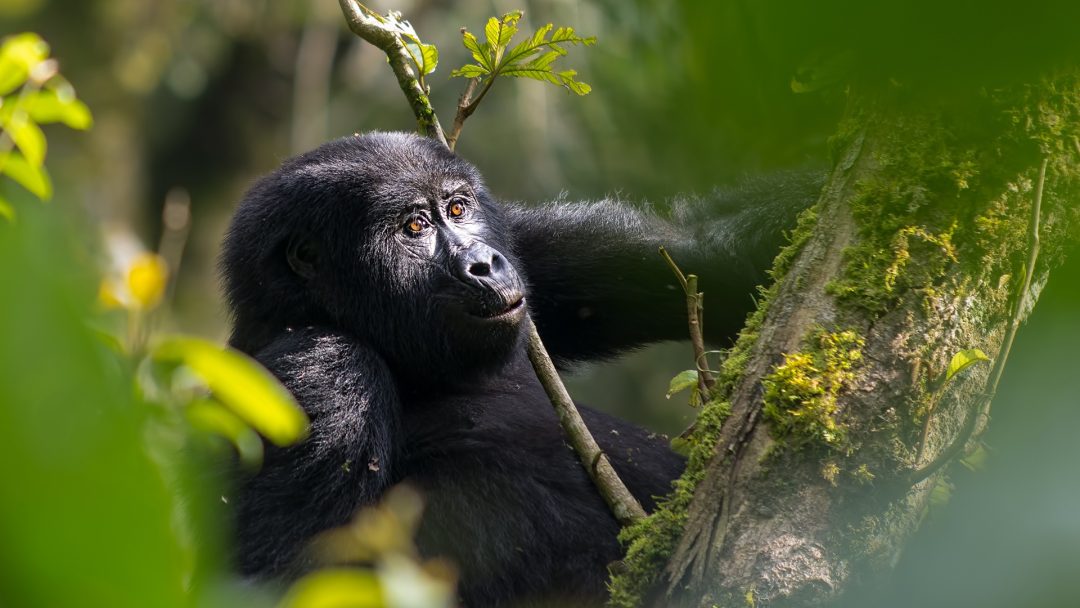
The dynamics within a gorilla family are complex and fascinating. Silverbacks are known for their protective instincts, keeping watchful eyes over their family and ensuring their safety from potential threats. In times of danger, silverbacks will often position themselves at the forefront, using their strength to shield their group, while females care for their offspring, further solidifying the intricate web of social bonds that characterize these remarkable primates.
Communication: A Symphony of Sounds and Gestures
The language of gorillas is rich and diverse, encompassing a wide range of vocalizations, body language, and facial expressions. Their communication repertoire includes deep roars, soft grunts, expressive purrs, and even chirps, each sound carrying distinct meanings that convey emotions and intentions. A roaring call might signal alarm, while a gentle chirp can indicate comfort and contentment.
In addition to vocalizations, gorillas utilize body language and facial expressions to communicate. A powerful stance, direct eye contact, or a gentle grooming gesture can signify dominance, submission, or affection. These nuanced forms of communication are essential for maintaining social order and relationships within their family groups.
Strength: The Mighty Gentle Giants
When one thinks of gorillas, the first image that often comes to mind is their incredible physical strength. Adult male gorillas, with their muscular builds and imposing presence, are estimated to be four to six times stronger than the average human. This remarkable strength is not only for display; it serves practical purposes within their social structure and day-to-day activities, from establishing dominance to navigating their challenging mountainous habitats.
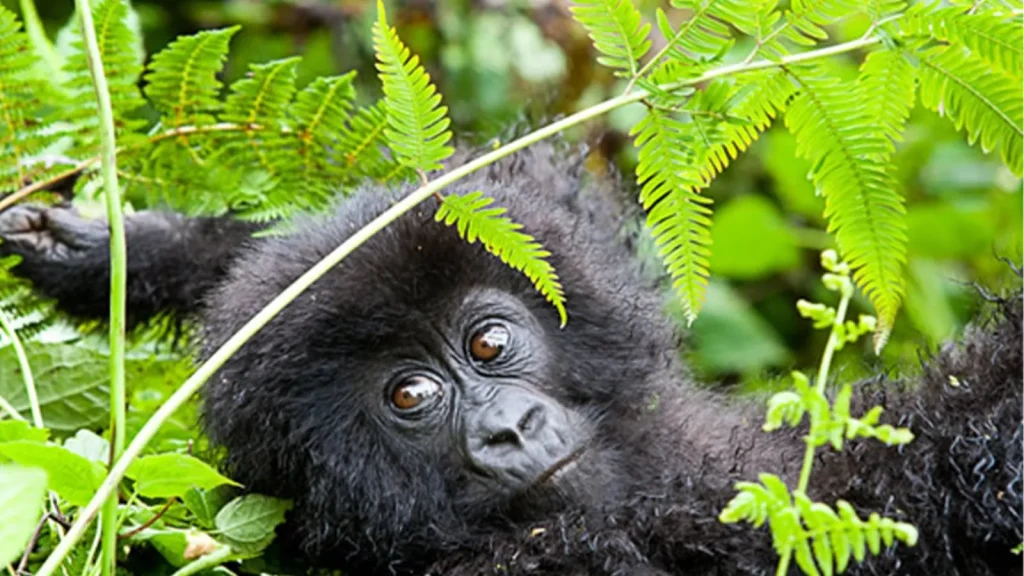
Despite their formidable appearance, gorillas are generally gentle and peaceful creatures, showcasing a fascinating duality that intrigues wildlife enthusiasts and researchers alike. Their strength, coupled with their calm demeanor, reflects the balance of power and grace in the animal kingdom.
Diet and Foraging: Masters of the Green
Mountain gorillas are primarily herbivorous, feeding on a diverse array of plants, fruits, and leaves. Their diet consists of approximately 55-60% leaves, with a particular fondness for bamboo, alongside fruits like berries and bananas, which make up about 15-20% of their intake. Their foraging strategies are equally intriguing; they exhibit unique behaviors, such as using tools to extract bamboo shoots and demonstrating complex social dynamics by sharing food with family members.
Understanding their dietary preferences and foraging habits is crucial for conservation efforts. Preserving their habitats and ensuring a sustainable food supply directly impacts their survival and the health of their ecosystems.
Habitat: The Enclaves of Serenity and Struggle
Mountain gorillas inhabit the dense, verdant forests of Central Africa, primarily found in the mountainous regions of Rwanda, Uganda, and the Democratic Republic of Congo. These habitats, characterized by tropical rainforests and cloud forests, provide a unique environment for gorillas to thrive at altitudes ranging from 600 to 4,300 meters. The Virunga Mountains, home to the last remaining mountain gorillas, are particularly vital, offering rich vegetation and rugged terrain that supports their lifestyle.
However, these habitats are increasingly threatened by human activities such as deforestation, agriculture, and poaching, underscoring the urgent need for conservation efforts to protect these fragile ecosystems.
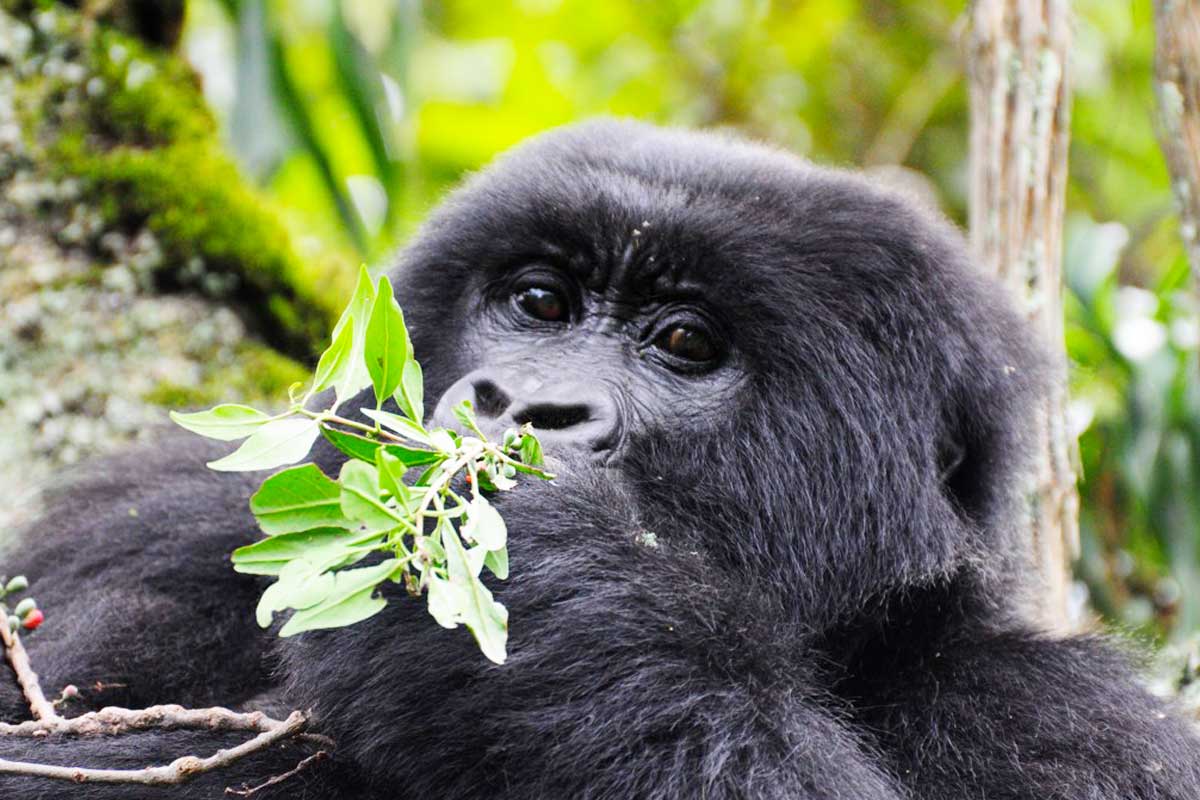
Conservation Challenges: The Fight for Survival
Despite ongoing conservation efforts, mountain gorillas face significant threats. Habitat loss due to agricultural expansion, poaching, and human-wildlife conflict has pushed them closer to the brink of extinction. Additionally, diseases, particularly those transmitted by humans, pose a serious risk to their populations. All four subspecies of gorillas are listed on the IUCN Red List, with mountain gorillas classified as endangered.
International protection initiatives are essential for safeguarding these incredible creatures. Sustainable tourism, community engagement, and habitat preservation are critical components of the ongoing fight for their survival.
Reproduction and Lifespan: The Cycle of Life
The reproductive cycle of mountain gorillas is fascinating and complex. Female gorillas typically give birth to 2 to 6 offspring over their lifetimes, with intervals of 4 to 6 years between births. Pregnancy lasts about 8.5 months, during which infants cling to their mothers for protection and nourishment. Males reach sexual maturity between 10 and 12 years, while females mature slightly earlier.
This slow reproductive rate highlights the vulnerability of mountain gorillas, making conservation efforts all the more crucial in ensuring their future.
Behavior and Socialization: A Tapestry of Relationships
Gorillas thrive in social environments, fostering relationships through grooming, play, and cooperation. Their social structure revolves around the silverback male, who maintains order and stability within the group. Dominance hierarchies are established, but they are fluid, often shifting based on individual interactions and behaviors.
The bonds formed within gorilla families are deep and enduring, reflecting a complex tapestry of relationships that play a pivotal role in their survival and social dynamics.
Future Conservation: Hope on the Horizon
Looking ahead, the future of mountain gorillas hinges on concerted conservation efforts. Climate change, habitat loss, and poaching remain pressing threats, but international collaboration and community-based initiatives offer a glimmer of hope. Sustainable tourism can contribute significantly to local economies while promoting the protection of gorilla habitats.
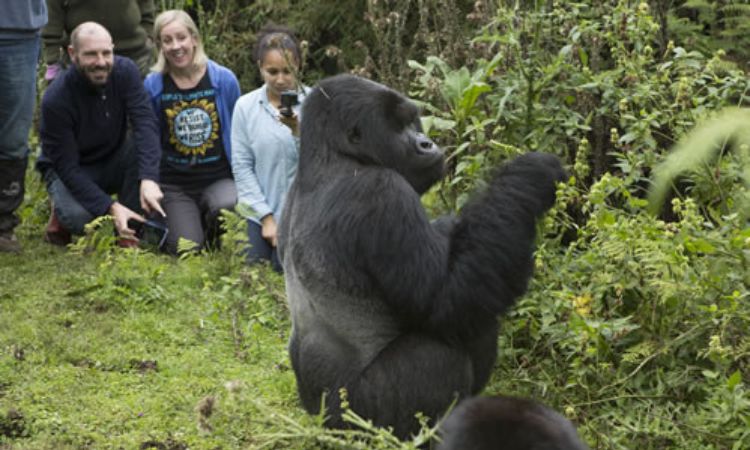
By choosing responsible operators like Jeisking Tours, travelers can engage in meaningful gorilla safaris that support conservation efforts and provide unforgettable experiences. Each journey into the gorillas’ realm not only enriches the lives of travelers but also contributes to the ongoing fight to preserve these magnificent creatures for generations to come.
Conclusion: Embrace the Journey and the Call for Conservation
Mountain gorillas are more than just incredible wildlife; they are emblematic of the complex relationships between nature and humanity. As we learn about their intelligence, social structures, and the challenges they face, we are reminded of our responsibility to protect these extraordinary beings. The opportunity to witness mountain gorillas in their natural habitat is a privilege that offers not only a glimpse into their world but also a chance to reflect on our role in preserving it. Join the movement to protect these gentle giants and embark on a journey that promises adventure, connection, and a deeper understanding of one of nature’s most awe-inspiring creations.
For an unforgettable gorilla trekking experience that prioritizes sustainability and conservation, contact Jeisking Tours at gorillaugandasafaribookings@gmail.com and start planning your adventure today. Together, let’s ensure the legacy of mountain gorillas endures for future generations.
This version aims to create a captivating narrative that flows smoothly while providing comprehensive information about mountain gorillas, appealing to both travelers and wildlife enthusiasts. Let me know if there are any specific areas you’d like me to adjust further!


